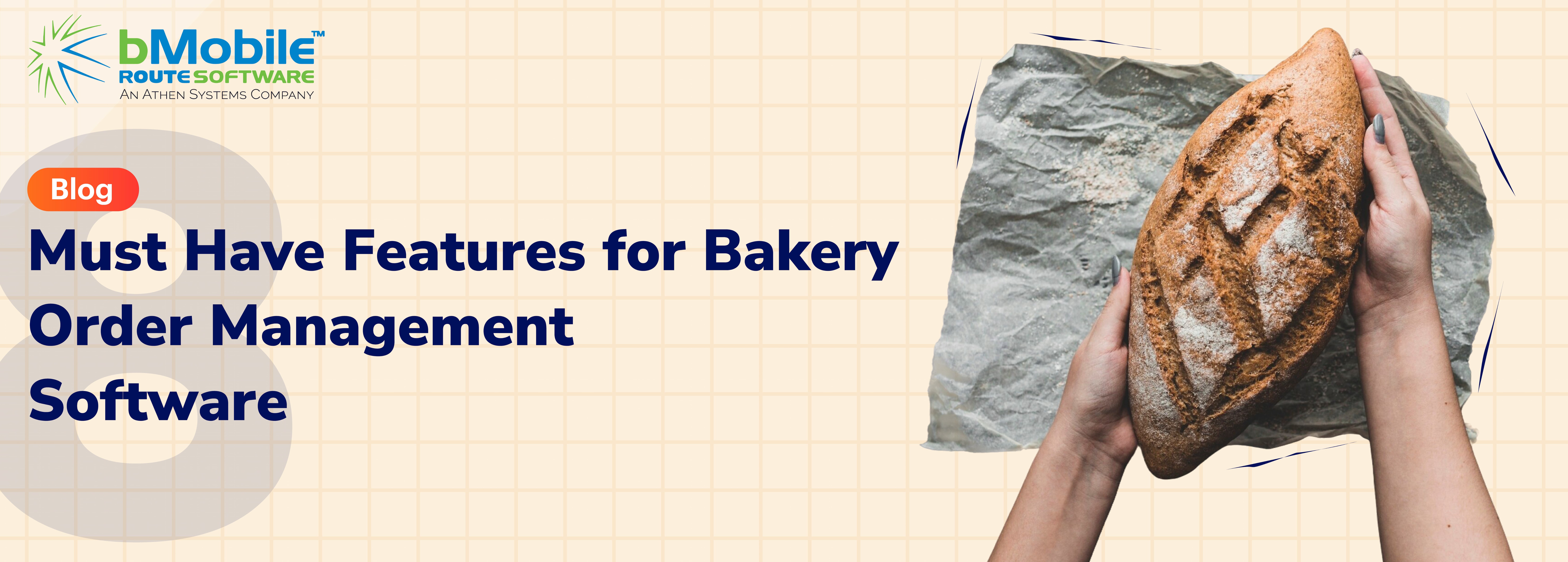8 Must‑Have Features for Bakery Order‑Management Software
Picture this: It’s 4 a.m., you’re sipping the first coffee of the shift, and the ovens are warming up. In ten minutes, you have to decide how much dough to mix — but yesterday’s numbers are still buried in a spreadsheet. Sound familiar?
Good news: a smart bakery system crunches yesterday’s sale and tells you exactly what to mix before the first tray hits the proofer. Once you understand the Bakery Management Software Features that separate the best tools from the rest, every batch size and delivery route become an easy call. Below are the eight features that really matter, broken down in simple, no jargon terms.
1. Smart “Bake Only What You Need” Forecasting
Think of this as a crystal ball for your mixers. The system studies past sales and upcoming orders, then tells you exactly how many baguettes or pastries to prep. bMobile’s bakery module says it “starts cutting costs before the products are loaded… Predictive ordering lets you stock ingredients in advance and bake the right amount when needed.”
2. Live Inventory — Every Shelf, Every Truck
Fresh bread loses value by the minute. Your software should show what’s left in the warehouse and what’s left on Route 12 right now. bMobile tracks “inventory on and off the truck throughout the daily route,” so you never promise product you don’t have.
3. Route Planning That “Thinks Like a Baker”
Regular GPS tools cut miles; bakery tools cut minutes before bread loses its crunch. bMobile’s Route Optimizer tool “organizes even the most complex schedule and optimizes each route,” squeezing extra stops into the day without hurting quality.
4. Mobile Invoicing & Signature Capture
No more paper tickets. Drivers use a handheld app to adjust orders at the shelf, grab a digital signature, and email the invoice before they pull away. The bakery page lists “Pre‑sale & Off‑truck Invoicing” plus “Signature Capture” as core tools.
5. Built‑In Spoil & Return Tracking
Returns happen. A good OMS logs each tray, notes why it came back, and shows the trend on a simple graph. Line 10 of the bakery page highlights that “spoils and returns are tracked” automatically.
6. Instant Dashboards for Owners & Managers
Margins in baking are razor‑thin. You need up‑to‑the‑second data on sell‑through, stale rates, driver performance, and fuel spend. The bMobile blog calls “Advanced Reporting and Analytics” a 2025 must‑have.
7. Plays Nice with Other Systems (ERP, EDI & DEX)
Your OMS isn’t a lone wolf. It should share data with your accounting package, big‑box retailer portals, and DEX scan guns. The bakery page lists “ERP Accounting Integration,” “EDI Integration,” and “DEX Integration” under its integrations menu.
8. Cloud Access with “No‑Signal” Backup
Whether you’re loading at 3 a.m. or delivering to a steel‑roofed store, you need software that works everywhere. Cloud hosting gives you log‑in‑anywhere freedom; offline mode keeps the app running until the signal returns. The 2025 feature list stresses cloud scalability as table stakes.
Your 60-second self-audit
| Must-Have | Got It? / |
|---|---|
| Smart forecasting | |
| Live inventory | |
| Route optimization | |
| Mobile invoices & signatures | |
| Spoil/return tracking | |
| Instant dashboards | |
| Easy integrations | |
| Cloud + offline |
Running a bakery is tough enough without juggling clipboards and stale data. Add these Bakery Management Software Features to your tech stack and you’ll:
- Cut waste and returns
- Shorten each stop (more sales per route)
- Get crystal clear data for decisions
- Delight retailers with always fresh stock
Next step: Pilot one route with software that checks every box. Track the spoil you save and the hours you win back. Chances are, the ROI will rise faster than your sourdough starter—and your 4 a.m. crew will thank you for it.
Take this list of eight must-have Bakery Management Software Features and hold it against whatever system you’re using today—no sales pitch, just an honest side-by-side check.
Recent Blog Posts
Picture this: It’s 4 a.m., you’re sipping the first coffee of the shift, and the ovens are warming up. In ten minutes, you have to decide how much dough to mix — but yesterday’s numbers are still buried in a spreadsheet. Sound familiar?
Direct Store Delivery (DSD) lives on narrow margins and fast information. Many distributors rely on QuickBooks for accounting, but still run a separate inventory tool on the side.
Maria Johnson is Director of Sales Operations at a midsize snack distributor that services 1,400 convenience stores across the Southeast.
In today’s distribution world, the way your product gets to the shelf is just as important as the product itself. The path you choose—whether Direct Store Delivery or traditional fulfillment—can shape your margins, customer experience, and even brand visibility in ways that aren’t always obvious at first glance.
Warehouse theft is more than just a pesky inconvenience—it can significantly dent your profits, disrupt your operations, and erode trust among your customers and stakeholders.
Order management systems (OMS) have evolved from basic inventory tools into comprehensive platforms that power modern supply chains.
When it comes to running a wholesale distribution business, efficient route planning can make or break your day-to-day operations.
When you're managing a 3PL (third-party logistics) operation, choosing the right warehouse management system (WMS) can make all the difference.
Imagine navigating the complexities of B2B distribution with ease and efficiency—this is the promise of modern B2B eCommerce platforms.
Managing inventory effectively is crucial for the success of any business, whether you're running a small retail shop or a large manufacturing company.
